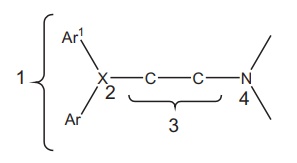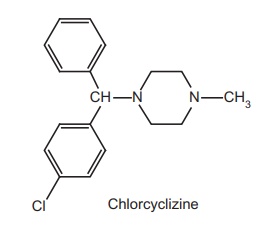Structure–Activity Relationship-H1 Receptor
| Home | | Medicinal Chemistry |Chapter: Medicinal Chemistry : Antihistamines
The diaryl substitution is essential for significant H1 affinity. It is present both in first generation and second generation antihistamines. The optimal antihistaminic activity depends on the co-planarity of two aryl substitutions.
STRUCTURE ACTIVITY RELATIONSHIP - H1
RECEPTOR ANTAGONISTS

1. Aryl groups
The diaryl
substitution is essential for significant H1 affinity. It is present
both in first generation and second generation antihistamines. The optimal
antihistaminic activity depends on the co-planarity of two aryl substitutions.
Active aryl
substitutions are as follows:
Ar is phenyl
and hetero aryl group like 2-pyridyl
Ar1-Aryl
or aryl methyl group
2. Nature of X
Antihistamines
with X = carbon (pheniramine series) represents the stereo selective receptor
binding to the receptors due to its chirality.
The active
substitutions of X are as follows:
Where X =
oxygen (amino alkyl ether analogue)
X = nitrogen
(ethylene-diamine derivative)
X = carbon (mono amino propyl analogue)
2. The Alkyl Chain
Most of the
antihistamines have ethylene chain, and branching of this chain results in a
less active compound.

All
antihistamines contain this general chain.
3. Terminal nitrogen atom:
The terminal
N-atom should be a 3° amine for maximum activity. The terminal nitrogen may be
a part of heterocyclic ring. For example, antazoline and chlorcyclizine,
retains high antihistaminic activity. The amino moiety deserves the protonation
on interaction with H1 recptor due to the basicity with pka 8.5-10.

Related Topics
